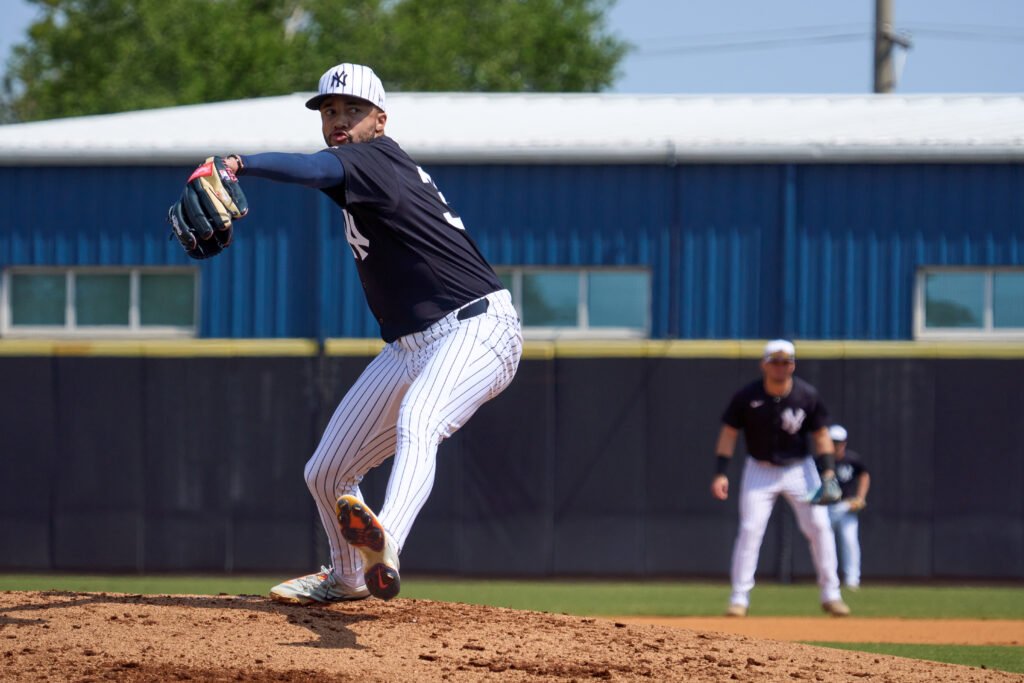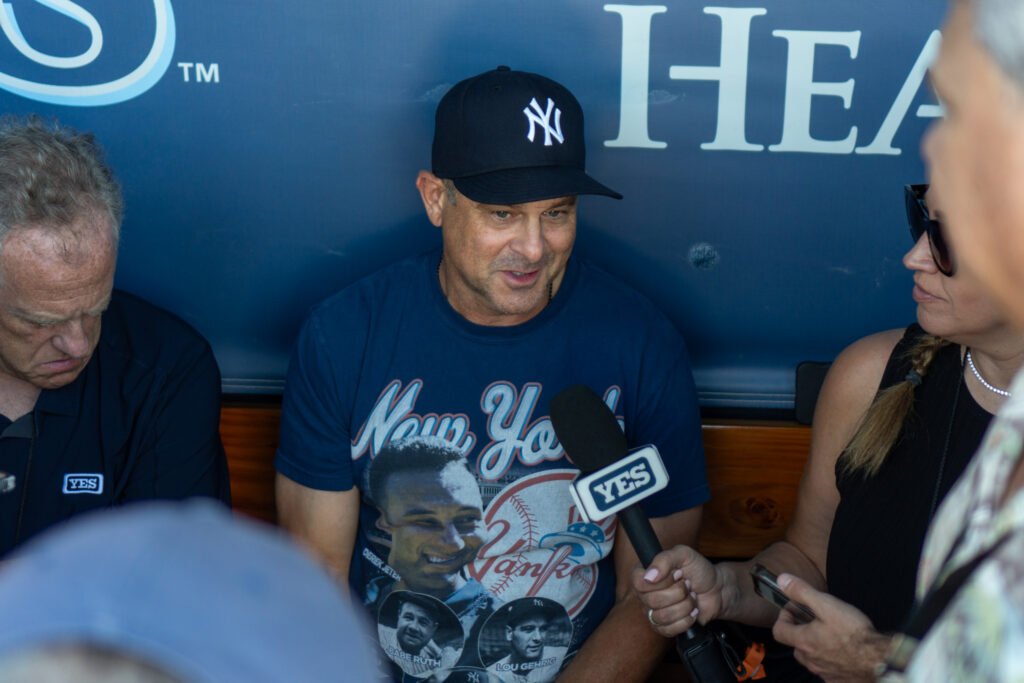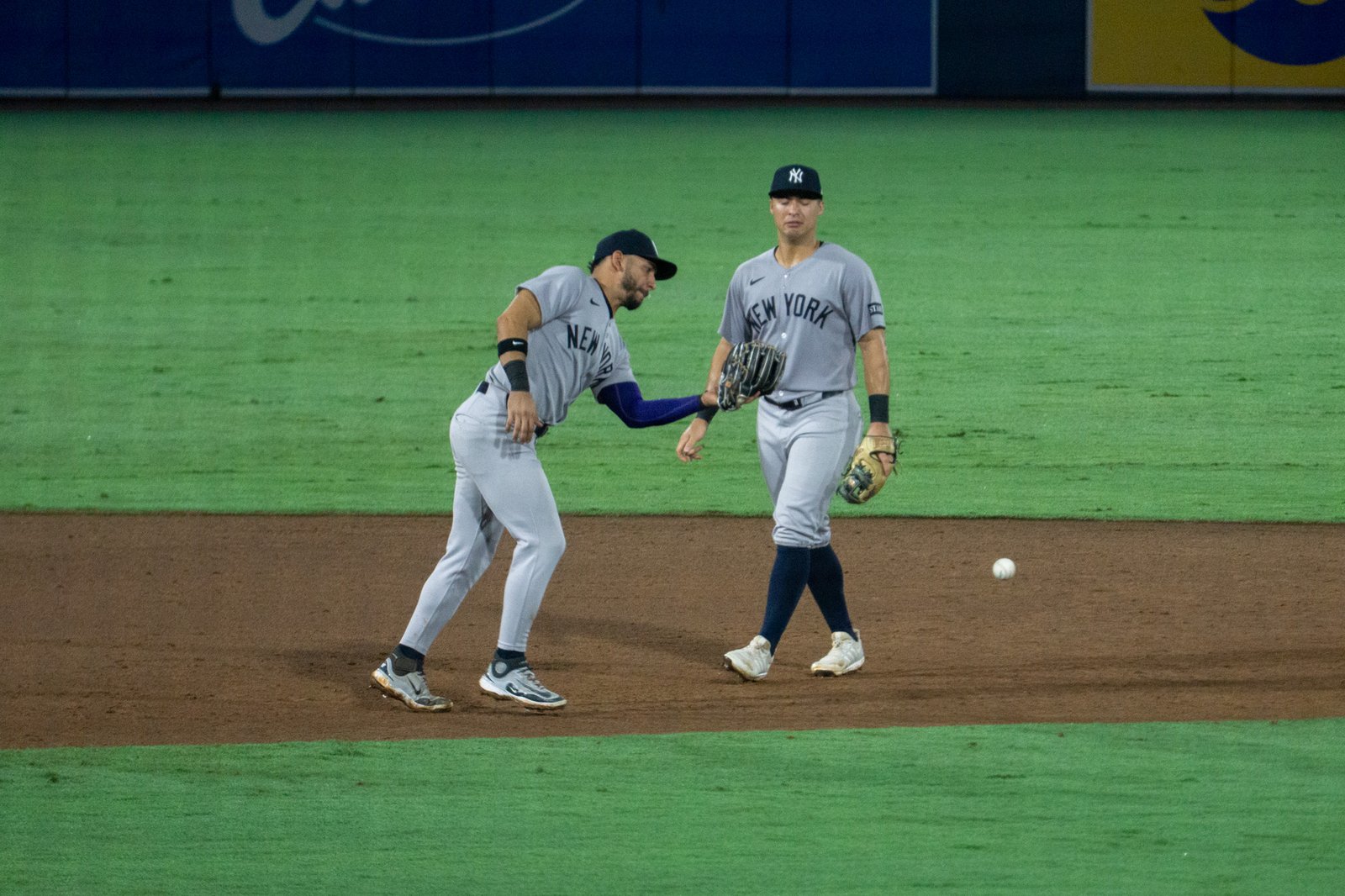The Yankees’ season wasn’t all smooth sailing, in fact, a dramatic midseason slump nearly derailed it. By May 28, New York sat at 35–20, enjoying a 7-game lead atop the AL East. But what followed was a prolonged stumble through June and July that saw that lead evaporate. The team went from 27 games over .500 in late June to a neck-and-neck division race by August. Ultimately, the Yankees finished 94–68 tied with Toronto and lost the AL East crown on a head-to-head tiebreaker. Blowing a 7-game lead qualifies as a major “what went wrong,” and it stemmed from a convergence of issues: injuries, pitching regressions, and offensive inconsistencies.
The rotation’s slide was at the heart of the Yankees’ summer swoon. Notably, even the co-aces weren’t immune. After dominating early, Max Fried and Carlos Rodón both hit slumps. Fried saw his ERA balloon in July as he struggled to pitch deep into games, putting strain on the bullpen. Rodón’s command wavered; in one late-July start he walked more batters than he struck out, uncharacteristic for him. These two were supposed to carry the load “in the absence of Gerrit Cole,” but instead they contributed to the midseason collapse with multiple subpar outings. For example, from mid-June to mid-July, Yankee starters allowed the most runs in the majors over that span. Rodón went just 2–3 in June after a brilliant 5–1 May, indicating his performance dipped exactly when the team started losing. With Fried and Rodón faltering simultaneously, the Yankees suddenly found themselves in frequent shootouts or early deficits. The pitching staff’s ERA, which had been best in the AL through May, spiked significantly by the All-Star break.
Bullpen woes compounded the issue, mainly highlighted by Devin Williams who was obtained in the offseason to lock down the ninth. This season, Williams had six losses, 7 blown saves, and a career-high 4.79 ERA indicating numerous missed opportunities to close games. Manager Aaron Boone stuck with him in high-leverage spots perhaps longer than he should have and it really bit the Yankees in the end. The club dropped many close games, evidenced by a middling 23–22 record in one-run games by season’s end.

Offensively, what went wrong was a team-wide cold spell and continued reliance on the homer. Through June and July, the Yankees’ batting average with runners in scoring position plummeted (implied by their overall .251 AVG being only 8th in MLB despite leading in runs, suggesting they were streaky and one-dimensional). The lineup would go through stretches where if they weren’t hitting homers, they weren’t scoring. This feast-or-famine tendency meant that during the slump, when facing good pitching, the Yankees often failed to string hits together. They were shut out or held to 1–2 runs a surprising number of times for an elite offense. Strikeouts were an issue as well. New York hitters struck out 1,463 times, second-most in the AL. High strikeout teams can be prone to slumps, and the Yankees were no exception. When their timing was off, rallies died quickly.
Crucially, the Yankees’ much-hyped young players underperformed, leaving the lineup with a couple of dead spots. Among them, Anthony Volpe failed to develop at the plate. In his third season, Volpe hit just .212 with a .286 OBP (83 wRC+, well below average). He “failed to deliver league-average offense in three seasons,” as one analyst noted, and even his usually strong defense significantly regressed in 2025. By mid-year, he was nursing a partially torn labrum (receiving multiple cortisone shots) that may have contributed to errors and a decline in range. Regardless, the Yankees got almost no offensive production from the shortstop position. That puts more pressure on others. Similarly, Austin Wells saw a sophomore slump, after a promising rookie year, his plate discipline vanished in 2025. Wells walked only 6.7% of the time and struck out 26%, leading to a modest .219 average and significant drop in OBP. By season’s end his wRC+ was 94 (6% below average). Having a catcher hitting under .220 and a shortstop barely above .200 created rally-killing spots in the lineup. The Yankees haven’t had a homegrown hitter sustain success beyond one season in years as no homegrown position player had posted league-average OPS+ in back-to-back seasons since Gleyber Torres in 2018–19. That drought continued with Volpe and Wells’ struggles, illustrating a development issue.
Some veteran acquisitions also underwhelmed. Paul Goldschmidt, signed to be a steady veteran bat, showed sharp decline. He managed only 10 home runs and 45 RBI in 145 games. His slugging percentage dropped to .403, a far cry from his MVP form. Boone often batted Goldy in the middle of the order against RHP, where he produced mediocre results. By sticking with him in those spots, Boone arguably hampered the offense, especially when younger, hotter bats like Ben Rice (26 HR, .499 SLG) sat while Goldschmidt (.328 OBP) played. This questionable lineup management was a point of criticism. Similarly, trade deadline pickup Ryan McMahon was supposed to add lefty power at third base, but he hit an anemic .208 with 4 HR after coming over. The in-season move for Amed Rosario also had minimal impact (he played just 16 games). The result: even as the team overall hit plenty of homers, they sometimes fielded 3–4 spots of sub-.230 averages, which became glaring on nights the long ball didn’t show up.

Another undercurrent to the Yankees’ struggles was a lapse in fundamentals and game management. During the slump (and even at times in the postseason), the team was plagued by sloppy play on the margins. There were too many instances of missed cutoff men, poor baserunning decisions, and defensive miscues. These might not show up in macro stats, but they cost games. The Yankees consistently continue to lose the battle on the margins, meaning if it wasn’t sheer talent winning out, they’d falter on fundamentals. For example, in a June game vs Boston, the Yankees allowed nine stolen bases in one game, the most by any team in 100+ years. That kind of lapse speaks to preparation and focus. Likewise, Volpe and others made many critical fielding errors in close games. The team’s baserunning aggressiveness sometimes crossed into recklessness: outs on the bases negated scoring chances. For instance, aggressive send-offs from third that led to outs at home, or pickoffs of overeager runners. The Yankees did steal a lot more bases (134), but not all attempts were wise as they were caught 38 times, most in MLB, indicating some overzealousness. It’s fine line between aggression and foolishness, and the Yankees often tripped over it.
Despite highlighting baserunning as an area of focus in 2025, the Yankees’ execution remained poor. The onus is partly on Boone and his staff to clean up those fundamentals. Moreover, Boone’s in-game management drew criticism. Aside from lineup choices (e.g., playing veterans over kids as mentioned with Goldy/Rice), his bullpen management was questioned. One glaring example: right after the deadline acquisitions of several relievers, Boone continuously inserted the struggling Devin Williams into a high-leverage spot instead of using the new arms, and it backfired. Fans and insiders alike were frustrated by moves like sticking with an obviously faltering closer or being slow to adjust roles. Boone’s propensity to give players “confidence boosts” sometimes backfired on the field. It’s worth noting that the Yankees have had summer swoons multiple years running, prompting questions about the manager’s ability to motivate and make adjustments. These decisions, while minor individually, added up in a tight division race the Yankees lost.
The culmination of what went wrong showed in October. The Yankees managed to survive the regular season slump to make the playoffs, but their issues were exposed in the ALDS loss to the American League East champion Toronto Blue Jays. In that series, the pitching staff was shelled – New York’s pitchers gave up 34 runs in the 4-game ALDS loss. Games 1 and 2 in Toronto were especially disastrous: a 1–10 loss followed by a 7–13 loss. The vaunted rotation did not hold up, Luis Gil was knocked around in Game 1, and even ace Max Fried got hit hard in Game 2 (charged with 7 runs in a slugfest). Falling behind 0–2 in the series largely due to pitching meltdowns was a recipe for elimination. Offensively, the Yankees actually scored 19 runs in the series, but many came in one game. They plated just 1 and 2 runs in their losses in Games 1 and 4, respectively. When they weren’t launching homers (they did score 9 in their lone win, Game 3), the bats went quiet against Toronto’s top arms. The Blue Jays’ pitching (led by veteran Kevin Gausman and rookie Trey Yesavage) exploited the Yankees’ weakness for chasing in those low-scoring games. Game 4, facing elimination, saw New York muster only 2 runs at home, a feeble finish. Failing to advance past the ALDS, after being World Series runners-up in 2024, was a clear disappointment. It highlighted that the Yankees, for all their talent, still had flaws to address if they wanted to get over the championship hump.
In summary, the 2025 Yankees’ shortcomings were multifaceted: a midseason free-fall caused by pitching ineffectiveness, one-dimensional hitting, and persistent fundamental issues. The fact that they only managed a Wild Card (despite being the best offense in baseball) speaks to those issues. New York learned that even a powerhouse lineup can’t paper over everything. All of these “wrongs” combined to cost the Yankees a division title and ultimately an ALDS exit. Understanding these issues will be crucial as the team looks to end their second longest World Series championship drought in franchise history.



No responses yet